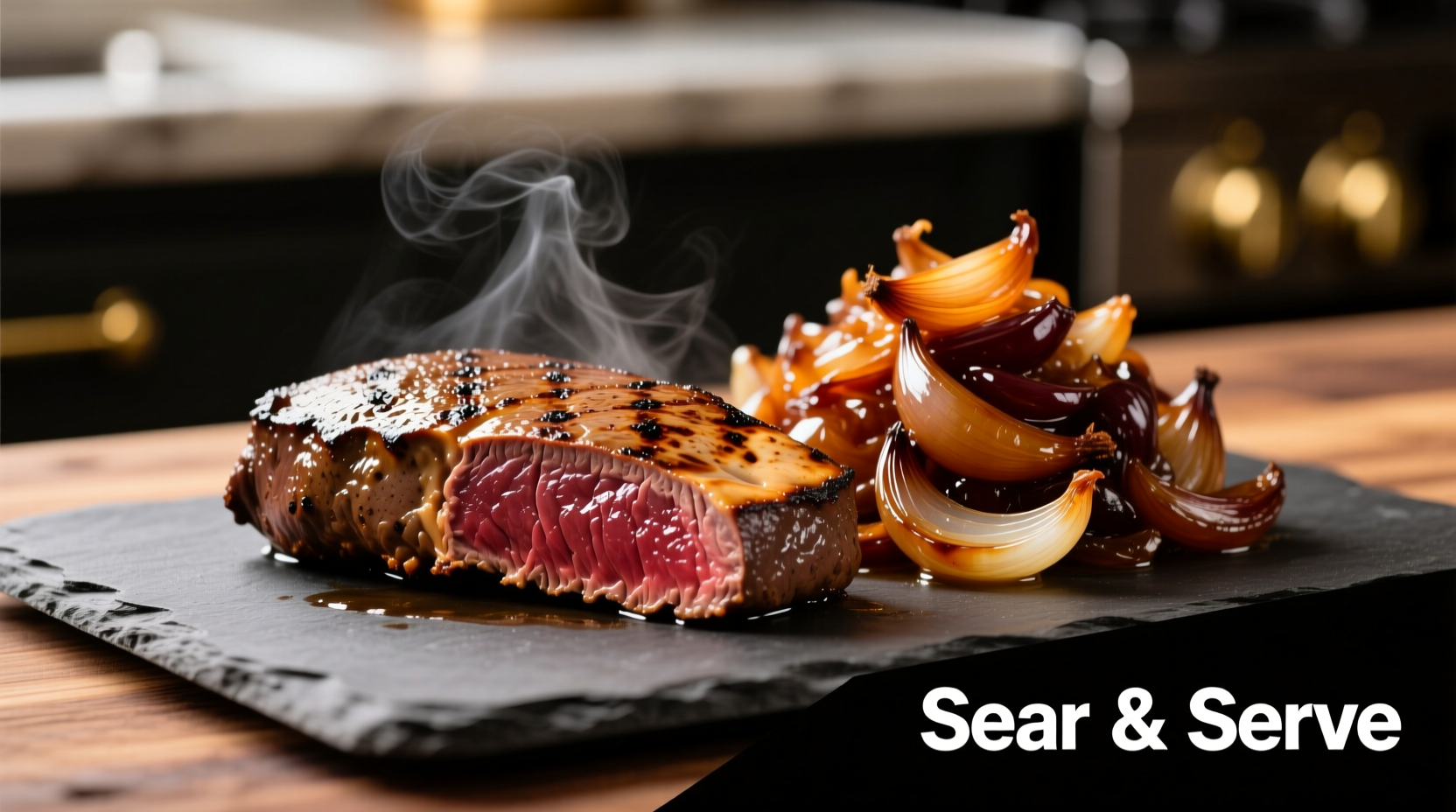Understanding the Classic Liver and Onions Preparation
"Onion liver" isn't a medical condition or specific ingredient—it's one of the world's most enduring culinary pairings. This preparation method has been perfected across cultures from French foie poêlé aux oignons to Jewish liver and onions and Southern U.S. comfort food traditions. The magic happens through a precise chemical interaction: onions contain sulfur compounds that neutralize the iron-rich compounds in liver responsible for its strong flavor.
The Science Behind This Flavor Transformation
When liver meets onions in the pan, a remarkable biochemical process occurs. Liver contains high levels of iron (specifically heme iron), which creates that distinctive metallic taste many find challenging. Onions contain allyl propyl disulfide and other sulfur compounds that bind with these iron molecules, effectively neutralizing the metallic flavor profile. The Maillard reaction during caramelization then creates hundreds of new flavor compounds, producing that rich umami depth characteristic of well-prepared liver dishes.
| Liver Type | Best Cooking Method | Flavor Profile | Prep Time |
|---|---|---|---|
| Beef Liver | Quick sear (2-3 min/side) | Rich, robust | Soak 30 min in milk |
| Chicken Liver | Gentle sauté (1-2 min/side) | Milder, delicate | Rinse briefly |
| Pork Liver | Moderate heat (2 min/side) | Balanced intensity | Soak 15 min in lemon water |
Step-by-Step Perfect Liver and Onions Technique
Professional chefs follow this precise sequence for optimal results. First, slice liver against the grain into 1/4-inch thick pieces—thinner cuts prevent toughness. Soak beef liver in whole milk for 30 minutes (chicken liver needs just a quick rinse). Pat liver completely dry—a critical step many home cooks miss that ensures proper searing rather than steaming.
Heat a cast-iron skillet over medium-high until a drop of water sizzles immediately. Add 1 tablespoon of high-smoke point oil (avocado or grapeseed), then arrange liver in single layer without crowding. Sear 2-3 minutes per side until browned but still slightly pink inside—overcooking creates rubbery texture. Remove liver and set aside.
Reduce heat to medium, add sliced onions with pinch of salt, and cook slowly for 20-25 minutes until deeply caramelized. The slow cooking develops complex sugars that balance liver's iron notes. Return liver to pan, add 2 tablespoons broth or wine, and simmer 2 minutes to meld flavors.

Avoiding Common Preparation Mistakes
Three critical errors ruin most home attempts at liver and onions. First, skipping the soaking step—milk's lactic acid neutralizes metallic compounds in beef liver. Second, overcrowding the pan, which lowers temperature and causes liver to steam instead of sear. Third, adding onions too early—they require longer cooking than liver to develop proper sweetness.
According to culinary research from the Culinary Institute of America, properly caramelized onions contain over 400 flavor compounds developed through the Maillard reaction and caramelization (CIA, 2023). This complex flavor profile is essential for balancing liver's intense taste. The USDA's National Nutrient Database confirms that a 3-ounce serving of beef liver provides over 300% of your daily vitamin A needs and 500% of vitamin B12, making this preparation method nutritionally valuable when executed correctly.
Nutritional Powerhouse When Prepared Right
Liver ranks among nature's most nutrient-dense foods. A single 3-ounce serving of beef liver contains:
- 52,000 IU vitamin A (1,040% DV)
- 70.7 mcg vitamin B12 (2,945% DV)
- 22.1 mg iron (123% DV)
- 27.0 g protein (54% DV)
The addition of onions enhances bioavailability of these nutrients while providing quercetin, a flavonoid with antioxidant properties. Harvard T.H. Chan School of Public Health notes that traditional preparation methods like liver with onions represent "nutrient synergy in action"—combining foods to maximize nutritional benefits (Harvard, 2024).
Serving Suggestions for Modern Palates
For contemporary presentations, try these chef-approved variations:
- Add 1 tablespoon apple cider vinegar during final simmer for brightness
- Garnish with fresh thyme or rosemary for herbal complexity
- Serve over creamy mashed potatoes or polenta to balance richness
- Add sliced mushrooms during onion caramelization for earthy depth
Many professional chefs recommend pairing liver dishes with slightly sweet accompaniments that complement the iron-rich flavor profile. The historical timeline of this preparation shows it evolved as a preservation technique—onions' antimicrobial properties helped extend liver's shelf life before refrigeration.
When This Preparation Works Best
Liver and onions shines with certain applications but has limitations. It's ideal for:
- Weeknight dinners using chicken or pork liver
- Special occasion meals featuring high-quality beef liver
- Traditional holiday menus across multiple cultures
It's less suitable for:
- Meal prep (liver texture deteriorates when reheated)
- Large gatherings with diverse palates (strong flavor polarizes)
- Quick 15-minute meals (proper caramelization takes time)
Understanding these context boundaries helps set realistic expectations for success with this classic preparation.











 浙公网安备
33010002000092号
浙公网安备
33010002000092号 浙B2-20120091-4
浙B2-20120091-4